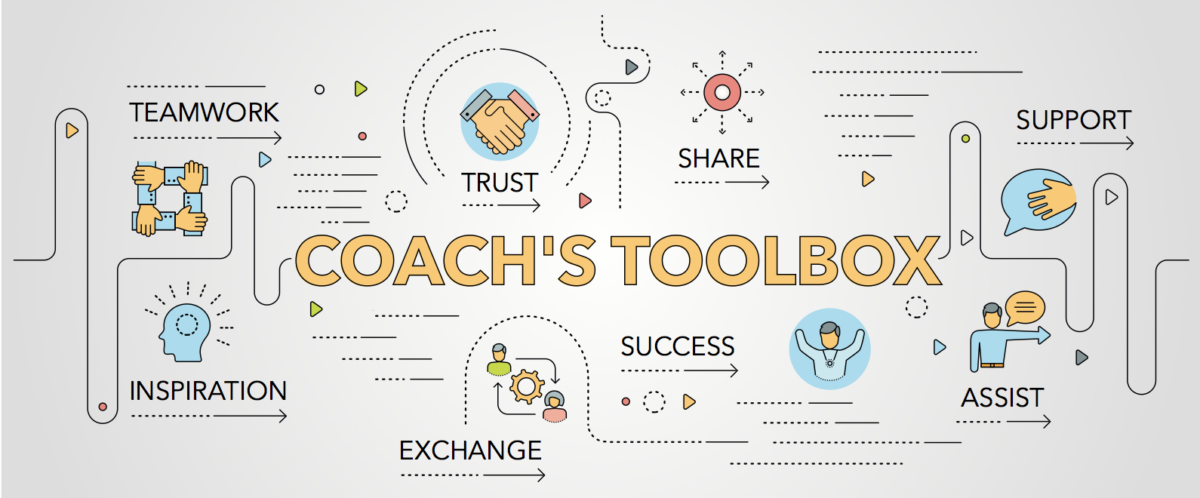


Instructional coaches continue to share their best practices as part of our TeachBoost series, “Your Coaching Toolbox“. So far, we’ve learned about strategies for building relationships as an instructional coach, and establishing trust while transitioning from teacher to coach.
In her two-part post, our latest guest blogger, Christina Brammell, was gracious enough to share some techniques for turning conversations from mandatory to “voluntary” while working with her teachers.
The “Typical” Life of an Instructional Coach
We live in a world of ever changing initiatives and reforms in education. Having been in the trenches with my fellow teachers I can say that often our plates our full with grading, parent communication or conferences, lesson planning, tutorials, staff meetings and the required professional development. We just donât have the time to invest and learn about these new ideas because that means we have to give up something else in our day. Plus, that wouldnât be in the best interest of our students because we have to get everything else done. After all, we know what they need, right?
Itâs safe to say teachers feel overwhelmed. Now throw into this mix the idea of working with an instructional coach. Without sharing the purpose for why a campus has an instructional coach or their role, teachers view us instructional coaches as the bad guy. The lack of clarity creates the impression that we are just someone showing up uninvited to their room and our only job is to evaluate that teacher, tell them all of the things they are doing wrong and inform administration about their bad teaching.
We know that is not our purpose, but Iâll be honest with you, I have some experience with teachers avoiding planning with me like the plague because my role was not communicated to them. They have found reasons to divert the conversation away from instruction in hopes that I donât realize what they are doing. They have willingly asked to attend ARD meetings for students they do not teach. They have pretended to listen and then turn around and throw everything discussed during the meeting in the trash can, and yes, teachers have even stood up and left in the middle of our planning after being asked some tough thinking questions. This is just my personal experience as a science instructional coach, but I feel safe in saying itâs probably a common one when your role has not been clarified or explained to the teachers on your campus.
What does this say about being an instructional coach? It reveals that you often feel alone and isolated on an island without a lifeline back to reality. How are we supposed to work with teachers when they donât want to work with us? Administration typically says theyâre requiring these teachers to work with you, but then when you sit down to collaborate with them you are spinning your wheels. The conversation is forced because the teachers do not have authentic buy-in to your role. So how do we move away from this forced interaction to a voluntary conversation that improves first time instruction with a measurable impact on our students?
Using âStudent-Centered Coachingâ to Shift the Conversation to Voluntary
My answer to this question is Student-Centered Coachingâ . This is where the teacher and coach work in a partnership. Our work together is
- aligned to the standards and curriculum
- designed collaboratively for students
- measured through student learning and evidence.
When I work with my teachers, I keep our work focused on the studentsâ progress towards mastery of the learning-standard. This type of interaction has allowed my teachers to let their guards down when working with the me because they understand that our work together is not about me judging their ability to do their job. Instead, we are working as a team with a shared goal that âweâ created together to design and implement instruction that improves all studentsâ ability to master the standards. When we meet we are using student artifacts (work) and student data to analyze the studentsâ progress. Then we collaborate about instruction that is differentiated for the needs of all learners in their classroom. Our impact in our work together is measured by the growth of each studentâs progress towards mastery of the learning standard.
Now letâs address the elephant in the room: why is Student-Centered Coaching better than the typical Teacher-Centered or Relationship-Centered Coaching Models? The answer is found in what you are trying to truly achieve as an instructional coach. Ask yourself the following questions, is your goal as an instructional coach to:
- focus on what a teacher is or is not doing?
- only provide support to teachers and not create cognitive dissonance?
- be seen as the person who holds them accountable to administration?
Or is it to:
- ensure that our students are being provided equitable access to quality first time instruction?
If you answer yes to any of the first three questions, then I have to tell you that your coaching work is not impacting students. Instead, you may or may not be growing your teacher because your focus is on what the teacher is or is not doing, or you are steering clear of any challenging question to create cognitive dissonance. Whatever the case may be your focus does not include the students.
So how do I coach a teacher who is struggling in some basic instructional strategies while adhering to the idea of Student-Centered Coaching? The answer is to embed this need within your coaching cycle by discussing the strategy within the context of what the students need to know.
Letâs say your teacher struggles to use formative assessment throughout the unit. If your coaching focus is tied to a student learning standard then you can discuss how to measure their progress throughout the unit, model how to gather the formative assessment data, then discuss how to analyze this data and use it to adjust your instructional practices to meet the needs of all learners in the classroom. By walking your teacher through these steps they see how powerful that strategy was to help their students meet the standard-based goal and are more likely to incorporate it into their normal practice.
Stay Tuned!
In the next post from “Your Coaching Toolbox,” Christina Brammell will share some of her keys to success in the work between herself and her teachers. In fact, she has four key success factors around: the environment created on your campus, relationships, recognizing the opening, and choosing your words wisely.
â Please know that the training I have received is a combination of many wonderful educators who have shared their research through books and conferences. One of my favorite coaching resources that has helped me with Student-Centered Coaching comes from Diane Sweeney and her book called Student-Centered Coaching at the Secondary Level.
About our Guest Blogger
Christina Brammell started her educational career as a true science loving nerd when her first birthday request was a microscope kit. She earned her B.S. in Chemistry at Westminster College at New Wilmington, PA in 2010 and her M.S. in Chemistry from Texas A&M University at College Station in 2012. During this time she realized that her passion for science flourished when she was able to help students make real life connections to science and she jumped into the world of education. After five years in the classroom, she has just finished her first year as a science instructional coach at two intermediate campuses.
Follow Christina on Twitter @cb_sciencecoach as she strives to be a catalyst for change.
{{cta(‘352a410e-db79-4f33-a482-d301e8041965′,’justifycenter’)}}
Stay Connected
News, articles, and tips for meeting your district’s goals—delivered to your inbox.








